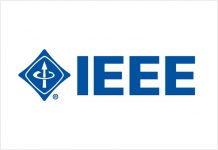
Symplectic – a Digital Science company that provides technology solutions to research organisations and their funders – is now celebrating 20 years of powering the global research ecosystem.
Founded initially by four friends studying theoretical physics at Imperial College London – John Fearns, Daniel Hook(who is now Digital Science’s CEO), Marko Ivin, and Philip Parkin – Symplectic has gone on to develop flexible solutions that help universities, institutions and funding organisations on every continent to achieve their research goals.
With its flagship products Symplectic Elements (a research information management system, enabling institutions to showcase their expertise, equipment and facilities) and Symplectic Grant Tracker (a grants management platform for research funding organisations), Symplectic’s deep industry expertise and team-led approach has attracted a global client base of more than 180 organisations worldwide.
Among many others, Symplectic currently serves:
- Thirteen of the Top 25 universities in the world, and 25 of the Top 100 (Times Higher Education rankings)
- Nine Russell Group universities in the UK
- Three Group of Eight universities in Australia
- Leading long-term clients such as the University of Oxford, Carnegie Mellon University, University of Auckland, and the National History Museum (UK)
- Research funding and philanthropic clients such as The Howard Hughes Medical Institute, Macmillan Cancer Support, and Worldwide Cancer Research.
Over 20 years, Symplectic has proved its worth to its clients around the world in some of the most prestigious organisations:
“With this partnership, we have the opportunity to position ourselves as a world leader in the development of the scholarly ecosystem.”
—Keith Webster, Dean of University Libraries, Director of Emerging and Integrative Media Initiatives, Carnegie Mellon University.
“Leveraging the interoperability between Symplectic Elements and DSpace has increased policy-driven institutional repository deposits by over 350%.”
—Ellen Phillips, Open Access Specialist, Boston University.
“It is critical to our state’s economy that we utilise every aspect of our knowledge and innovation talent across the public and private sectors. We’re incredibly proud of what we’ve created with OIEx [Ohio Innovation Exchange] – better connecting the experts and resources at our state research universities to the industries that can utilize them to push their breakthrough ideas to fruition.”
—John Carey, Chancellor, Ohio Department of Higher Education (2013-2018).
“Digital Science demonstrated that they understood the drivers of higher education: the complexities of institutional data, the decentralized and myriad ways this data is often managed; but most importantly, they could point to proven strategies and ways to deal with that.”
—Tim Cain, PhD, Associate Professor of Biomedical Sciences, Ohio University.
Symplectic was the first company to become part of Digital Science in 2011, shortly after Digital Science was launched out of Nature Publishing Group, and has played a key role in the growth of the company.
Daniel Hook, CEO of Digital Science and co-founder of Symplectic, said: “When we founded Symplectic, we aimed to create software that more represented the perspective of the primary user of many administrative systems – researchers. It was a time when software that was written to meet institutional needs often forgot that it was researchers who were the principal users.
“Symplectic has been an innovator – using automation to save time for researchers while empowering them to own their own data, and helping institutions to have confidence in their data so that they can reuse it in many systems, saving even more time.
“Symplectic remains very close to my heart. The idea that we save researchers a few minutes a year and those minutes add up across the more than half million academics who use Elements around the world is very satisfying.”
Jonathan Breeze, CEO of Symplectic, said: “One of the best parts of the Symplectic story is that we have continued to evolve our solutions in collaboration with our international client-base, and it is through these trusted relationships that we have been able to both grow as a business and as a community.
“Today, Symplectic helps institutions to understand the breadth and depth of their research capabilities, to showcase their quality research expertise and facilities, to attract more interest in their work from collaborators and industry partners, to provide more coordinated approaches to funding, and to build on their outstanding research efforts.
“While we look forward to highlighting Symplectic’s past achievements throughout the year, we’re also excited about where Symplectic is headed. This includes continuous improvement of our existing services as well as expansion through new functionality and integration capabilities that offer unique features to our clientbase.”























